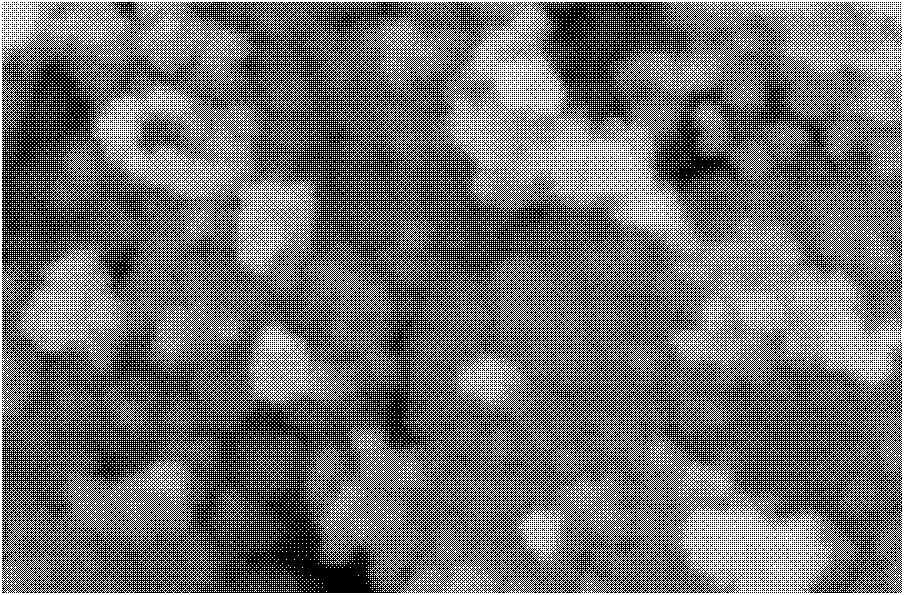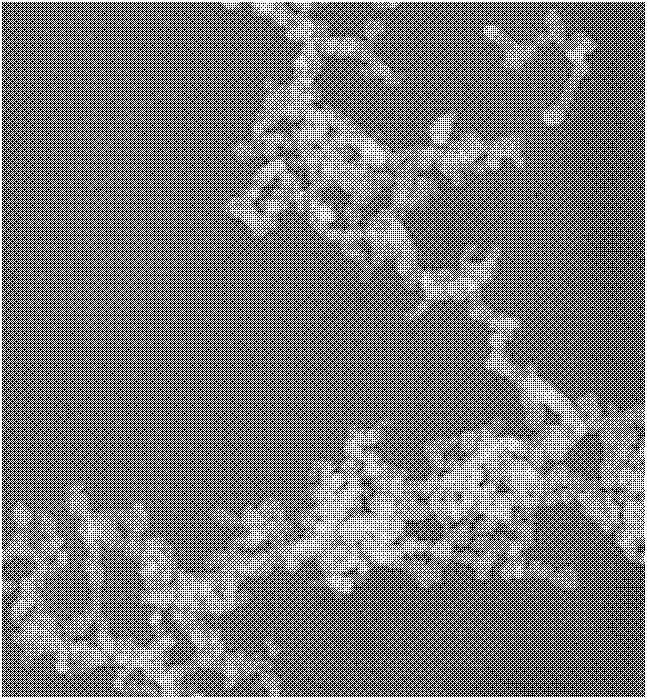Application of semiconductor oxide ultrafine nanoparticles in cataluminescence sensor, and preparation method of semiconductor oxide ultrafine nanoparticles
An ultra-fine nano, oxide technology, applied in chemical instruments and methods, chemiluminescence/bioluminescence, luminescent materials, etc., can solve problems such as low catalytic luminescence efficiency, achieve rapid signal response time, sufficient contact, and increase specific surface area. Effect
- Summary
- Abstract
- Description
- Claims
- Application Information
AI Technical Summary
Problems solved by technology
Method used
Image
Examples
Embodiment 1
[0025] Present embodiment 1 carries out as follows:
[0026] 1. Put 200mL of the newly prepared 30% nitric acid solution into a 500ml round bottom flask filled with 5g of carbon nanotubes, place it in an aluminum pot filled with silicone oil, and heat it under reflux at 135°C for 24 hours under continuous magnetic stirring. Hour;
[0027] 2. Centrifuge the carbon nanotubes after activation, remove the nitric acid solution, and dissolve 5g SnCl 2 2H 2 O was added to the acidified carbon nanotube environment, and the prepared reaction system was ultrasonically treated at room temperature for 2 hours;
[0028] 3. Under rapid stirring conditions, slowly add the concentrated ammonia solution dropwise into the ultrasonically treated system until the pH value = 8 to obtain the precursor, and dry the precursor at 90°C for 3 hours;
[0029] 4. Raise the temperature of the precursor to 500°C in the air, then pass in an inert gas, and keep the temperature in the inert gas for 0.5 hour...
Embodiment 2
[0032] Present embodiment 2 carries out as follows:
[0033] 1. Add 200mL of the newly prepared 25% nitric acid solution into a 500ml round bottom flask filled with 3g of carbon nanotubes, place it in an aluminum pot filled with silicone oil, and heat it under reflux at 125°C for 24 hours under continuous magnetic stirring. Hour;
[0034] 2. Centrifuge the carbon nanotubes after activation, remove the nitric acid solution, and dissolve 6g SnCl 2 2H 2 O was added to the acidified carbon nanotube environment, and the prepared reaction system was ultrasonically treated at room temperature for 3 hours;
[0035] 3. Under rapid stirring conditions, slowly add the concentrated ammonia solution dropwise into the ultrasonically treated system until the pH value = 9 to obtain the precursor, and dry the precursor at 80°C for 3 hours;
[0036] 4. Raise the temperature of the precursor to 520°C in the air, then pass in an inert gas, and keep the temperature in the inert gas for 1 hour, ...
PUM
| Property | Measurement | Unit |
|---|---|---|
| particle diameter | aaaaa | aaaaa |
| pore size | aaaaa | aaaaa |
Abstract
Description
Claims
Application Information
 Login to View More
Login to View More - R&D Engineer
- R&D Manager
- IP Professional
- Industry Leading Data Capabilities
- Powerful AI technology
- Patent DNA Extraction
Browse by: Latest US Patents, China's latest patents, Technical Efficacy Thesaurus, Application Domain, Technology Topic, Popular Technical Reports.
© 2024 PatSnap. All rights reserved.Legal|Privacy policy|Modern Slavery Act Transparency Statement|Sitemap|About US| Contact US: help@patsnap.com










